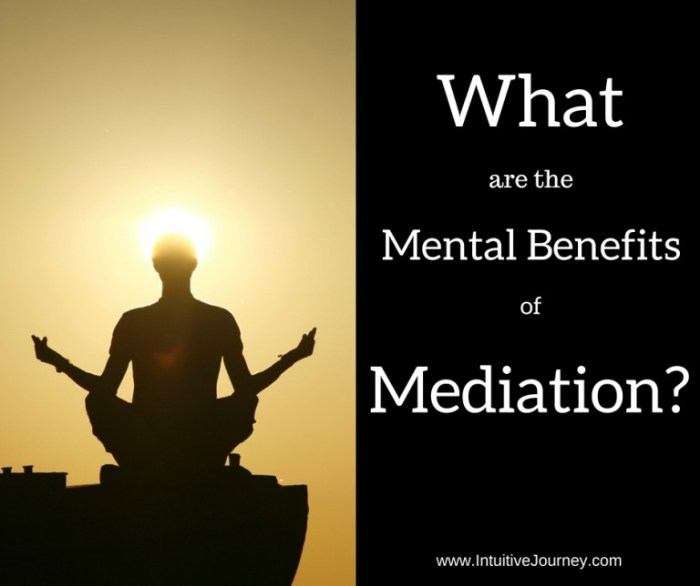7 things people with hidden depression often experience. This exploration dives into the subtle yet pervasive challenges faced by those struggling with depression while maintaining a facade of normalcy. We’ll uncover the intricate ways hidden depression manifests, from the subtle shifts in behavior to the strategies used to mask it. This is a journey into understanding a condition that often goes unnoticed, impacting relationships, work, and overall well-being.
Depression, in its various forms, can be profoundly isolating. Hidden depression adds another layer of complexity, as individuals grapple with the internal turmoil while outwardly presenting a different picture. Understanding the nuances of hidden depression is crucial for recognizing the signs and supporting those affected. By delving into the different facets of this experience, we aim to offer insights into the often-overlooked realities of those living with this condition.
Identifying the Traits
Hidden depression, often masquerading as other issues, can be challenging to recognize. Individuals struggling with this form of depression may exhibit subtle yet consistent behavioral patterns that deviate from their usual selves. Understanding these nuanced expressions is crucial for early intervention and support. These patterns aren’t always immediately apparent and often go unnoticed by both the individual and those around them.
Behavioral Patterns of Hidden Depression
Understanding the subtle behavioral shifts is key to recognizing hidden depression. These patterns often manifest in a way that’s different from the more overt signs of depression. They can be easily overlooked, particularly in social settings.
- Withdrawal and Isolation: Instead of openly stating their unhappiness, individuals with hidden depression might withdraw from social activities, preferring solitude. This isolation can manifest as decreased participation in group events, canceling plans, or declining invitations. In social settings, they might appear disinterested or disengaged, observing rather than actively participating.
- Overcompensation and Masking: To avoid perceived weakness or vulnerability, some may overcompensate. This might involve being overly enthusiastic, maintaining a facade of happiness, or taking on extra responsibilities. In social settings, they might appear hyper-productive, overly helpful, or relentlessly positive, masking underlying emotional distress.
- Decreased Productivity and Motivation: Hidden depression can subtly impact daily routines. Individuals may experience a decline in motivation, difficulty focusing, and reduced productivity at work or school. This can show up in social situations as a lack of engagement in conversation, a tendency to miss deadlines, or a general air of apathy.
- Increased Irritability and Short Temper: Underlying emotional pain can sometimes manifest as irritability or short temper. This may lead to unexpected outbursts, frustration, or negativity in social settings. It’s important to note this irritability isn’t necessarily directed at others, but rather a symptom of the internal struggle.
- Changes in Appetite and Sleep Patterns: Individuals may experience significant changes in appetite and sleep patterns, often without explicitly recognizing it as a symptom. This can involve increased or decreased food consumption and sleep disturbances, which might impact social interactions due to fatigue or mood swings.
- Avoidance of Difficult Conversations and Conflicts: To avoid confronting emotional challenges, some might steer clear of potentially difficult conversations or conflict situations. This might manifest as a tendency to avoid disagreements, backing down from arguments, or withdrawing from potentially challenging interactions in social settings.
- Emotional Flatness and Detachment: Individuals with hidden depression may exhibit emotional flatness or detachment. This might appear as a lack of emotional expression, difficulty connecting with others on an emotional level, or a tendency to appear emotionally unavailable in social settings. This is not necessarily a conscious choice but rather a symptom of the underlying condition.
Overt vs. Hidden Depression
Distinguishing between overt and hidden depression is essential for effective intervention. The following table illustrates the differences in how the behavioral patterns manifest.
| Behavioral Pattern | Overt Depression | Hidden Depression |
|---|---|---|
| Withdrawal and Isolation | Explicit avoidance of social contact, expressing sadness and hopelessness. | Subtle disengagement from social activities, preferring solitude without explicitly stating unhappiness. |
| Overcompensation and Masking | Rarely seen, as the individual might not actively mask their emotions. | Maintaining a facade of happiness, being overly helpful, or hyper-productive to avoid appearing weak. |
| Decreased Productivity and Motivation | Openly acknowledging lack of motivation, difficulty completing tasks. | Subtle drop in productivity, difficulty concentrating, missed deadlines without outward acknowledgment. |
| Increased Irritability and Short Temper | Frequent outbursts, aggressive behavior, easily angered. | Unexpected irritability, frustration, negativity, and short temper without explicitly expressing anger. |
| Changes in Appetite and Sleep Patterns | Significant decrease or increase in appetite, insomnia, or excessive sleeping. | Changes in appetite or sleep patterns without consciously recognizing it as a problem. |
| Avoidance of Difficult Conversations and Conflicts | Openly avoiding confrontations and conflicts, fearing confrontation. | Subtle avoidance of difficult conversations or conflict, backing down from arguments. |
| Emotional Flatness and Detachment | Appearing emotionally unresponsive, withdrawn from emotional connection. | Difficulty connecting with others on an emotional level, appearing emotionally unavailable without outward acknowledgment. |
Social Masking Techniques

Navigating social interactions while grappling with hidden depression often requires individuals to employ various strategies to mask their internal struggles. This necessitates a careful balancing act between maintaining social connections and protecting their emotional well-being. These techniques, while potentially offering temporary relief, can take a significant toll over time, impacting mental health and interpersonal relationships.Social masking is a complex coping mechanism used by individuals experiencing depression to present a facade of normalcy and well-being in social settings.
Ever wondered about the subtle signs of hidden depression? It’s fascinating how often we focus on the outward appearance of well-being, but there are often seven key things that can reveal more. Improving your curb appeal can actually have a surprisingly positive effect on your mental health, just as improving your home environment through things like landscaping or exterior paint can improve your emotional state.
Check out some fantastic tips on 6 ways to win with curb appeal to see how a refreshed exterior can boost your mood. Ultimately, recognizing these subtle indicators of hidden depression can be a crucial step towards well-being.
This often involves suppressing negative emotions, minimizing symptoms, and actively engaging in behaviors that align with social expectations. While this can allow individuals to maintain relationships and avoid potential judgment, it can also lead to emotional exhaustion, isolation, and strained connections with loved ones.
Ever wondered about the 7 things people with hidden depression often struggle with? It’s tough to pinpoint the signs, but physical health plays a huge role. That’s why incorporating some powerful full-body exercises, like the ones in this article 10 full body exercises that get you the most bang for your buck , can be incredibly beneficial.
These exercises aren’t just about looking good; they can improve mood and energy levels, indirectly tackling some of those hidden depression challenges. Ultimately, focusing on both mental and physical well-being is key to overcoming these struggles.
Common Masking Strategies
Understanding the various strategies employed in social masking helps shed light on the challenges faced by those with hidden depression. These strategies can be broadly categorized into behavioral, emotional, and cognitive adjustments.
- Behavioral Masking: This involves altering actions and expressions to appear outwardly happy and engaged. For instance, someone might force themselves to laugh at jokes even when feeling no amusement, or participate actively in conversations even when lacking the energy or interest. In social gatherings, they might over-exert themselves, offering constant support to others while neglecting their own needs.
This is evident in the way they present themselves, their level of participation, and their physical demeanor.
- Emotional Masking: This involves suppressing negative emotions, such as sadness, anxiety, and hopelessness. Individuals might deflect questions about their feelings or redirect conversations to more positive topics. A common example is someone who consistently presents an upbeat outlook, even when struggling with overwhelming sadness. This can be observed in their tone of voice, facial expressions, and responses to inquiries about their well-being.
- Cognitive Masking: This involves altering thoughts and perceptions to maintain a positive image. For instance, someone might rationalize their feelings of inadequacy or minimize the severity of their depression. They might convince themselves that their lack of energy is due to a simple lack of sleep or that their sadness is temporary. This can manifest in their explanations for their actions or their justifications for their moods.
Examples in Different Social Settings
The manifestation of masking strategies can vary significantly depending on the social context.
- At Work: An employee might maintain a cheerful demeanor, diligently complete tasks, and offer assistance to colleagues, even when experiencing low energy and difficulty concentrating. They might appear motivated and productive, masking their internal struggles with a carefully crafted persona.
- At Social Gatherings: Someone might force themselves to engage in conversations, participate in activities, and offer compliments to others, despite feeling disconnected and isolated. They might prioritize maintaining a sense of normalcy and avoiding attention to their inner turmoil.
- With Family: A family member might suppress feelings of sadness or anger, presenting a cheerful front, and maintaining a positive atmosphere within the family unit. This can include participating in family activities or making small talk, even when their energy is depleted.
Potential Costs and Consequences
The long-term impact of social masking can be substantial, leading to a range of negative consequences. It can strain interpersonal relationships, erode self-esteem, and lead to further emotional isolation.
- Emotional Exhaustion: The constant effort required to maintain a facade can lead to significant emotional exhaustion and burnout.
- Strained Relationships: The inability to communicate authentically can strain relationships, as others may not understand the underlying struggles.
- Increased Feelings of Isolation: Feeling unable to connect with others on a genuine level can lead to increased feelings of isolation and loneliness.
Impact on Interpersonal Relationships
The table below illustrates the potential impact of social masking on interpersonal relationships.
| Masking Strategy | Potential Impact on Relationships |
|---|---|
| Maintaining a cheerful facade | Can create a sense of superficiality and prevent genuine connection. Others may perceive the individual as disingenuous or insincere. |
| Avoiding vulnerability | Can hinder the development of close, supportive relationships. Others may feel unable to offer help or support due to the perceived lack of vulnerability. |
| Suppressing negative emotions | Can create a disconnect between the individual and their emotions, making it difficult to identify and address the root causes of depression. This can also affect their ability to seek help and support. |
Emotional Regulation Challenges

Navigating the complexities of daily life can be emotionally taxing for everyone. However, for individuals grappling with hidden depression, the ability to regulate emotions becomes a significant hurdle. This often manifests in subtle, yet pervasive, ways that can go unnoticed by those around them. These challenges stem from a combination of factors, including the internal experience of depression and the pressure to maintain a facade of normalcy.The experience of hidden depression often involves a disconnect between internal emotional states and outward expressions.
This disconnect can make it difficult for individuals to recognize and process their emotions effectively. They may feel overwhelmed by feelings of sadness, anxiety, or hopelessness, but struggle to articulate these feelings or identify appropriate coping mechanisms. This internal struggle can significantly impact their daily interactions and overall well-being.
Difficulties in Recognizing and Identifying Emotions
People with hidden depression frequently find it challenging to accurately identify and label their emotional states. This lack of clarity can lead to confusion and difficulty in responding appropriately to situations that trigger emotional responses. For example, a simple social interaction might elicit feelings of overwhelming anxiety or sadness, but the individual may not be able to pinpoint the exact cause or intensity of these feelings.
This lack of emotional awareness can lead to inappropriate reactions, or a general feeling of being overwhelmed and out of control.
Examples of Emotional Regulation Challenges in Daily Interactions
These challenges can manifest in various ways during daily interactions. Someone might appear overly cheerful and enthusiastic in social settings, while internally experiencing a deep sense of emptiness and despair. They might avoid eye contact or withdraw from conversations, masking their feelings of sadness or anxiety. Alternatively, they might become easily agitated or irritable, responding to minor inconveniences with exaggerated reactions, attempting to conceal their underlying emotional distress.
Common Coping Mechanisms
Individuals with hidden depression often develop coping mechanisms to manage their emotional distress. These mechanisms can be effective in the short term, but may have negative long-term consequences.
Effectiveness and Potential Negative Consequences of Coping Mechanisms
| Coping Mechanism | Effectiveness (Short-Term) | Potential Negative Consequences (Long-Term) |
|---|---|---|
| Distancing/Withdrawal | May temporarily reduce emotional intensity. | Can lead to social isolation, feelings of loneliness, and exacerbate depression. It may also impede the development of healthy support systems. |
| Over-exertion/Over-achievement | Provides a temporary sense of control and accomplishment. | Can lead to burnout, exhaustion, and further emotional dysregulation. It may also mask underlying emotional pain. |
| Suppression/Denial | Avoids immediate emotional discomfort. | Can lead to increased emotional reactivity, unresolved issues, and a build-up of stress. It may also create a disconnect from one’s own feelings and needs. |
| Substance Use | May offer temporary relief from emotional distress. | Can lead to addiction, health problems, and further emotional and psychological damage. It may also interfere with daily functioning and relationships. |
| Seeking External Validation | Provides a temporary sense of worth and belonging. | Can lead to dependency on others’ opinions and a lack of self-reliance. It may also cause disappointment and frustration when expectations are not met. |
| Intellectualization | Provides a way to distance oneself from emotions. | Can lead to a detachment from feelings and experiences. It may prevent emotional growth and understanding. |
Impact on Relationships
Hidden depression, a condition characterized by the internal struggle with depression while outwardly maintaining a facade of normalcy, significantly impacts relationships. Individuals with hidden depression often find themselves isolated and misunderstood, leading to strained connections with family, friends, and partners. This internal conflict can manifest as subtle communication breakdowns and emotional distance, ultimately creating long-term consequences for all involved.The struggle to reconcile the internal pain with the need to maintain social harmony often leads to strained relationships.
Individuals may withdraw emotionally, creating distance and misunderstandings. This emotional withdrawal can be misinterpreted as disinterest or a lack of care, further exacerbating the situation. The constant need to mask emotions can also lead to exhaustion and resentment, both for the individual with hidden depression and those close to them.
Family Relationships
Family members may struggle to understand the changes in behavior and mood exhibited by a loved one with hidden depression. This lack of understanding can lead to conflict and frustration. For example, a child with hidden depression might appear withdrawn and sullen, causing family members to question their behavior and even blame them for the problems. Similarly, a parent with hidden depression might become irritable and distant, leading to strained communication and resentment within the family unit.
This can manifest in arguments, misunderstandings, and a feeling of disconnect amongst family members.
Friend Relationships, 7 things people with hidden depression
Friends may notice subtle changes in a friend’s behavior but may not fully grasp the underlying cause. A friend with hidden depression might cancel plans more frequently, appear less enthusiastic, or become more isolated, leading to feelings of abandonment or confusion in their friends. Misunderstandings can arise from misinterpretations of these changes, leading to a gradual drift in the friendship.
For instance, a friend with hidden depression might seem distant, leading to friends assuming they are no longer interested in social interactions, ultimately resulting in a deterioration of the friendship.
Partner Relationships
Partners often bear the brunt of the emotional burden as they witness the emotional withdrawal and inconsistent behavior. A partner with hidden depression might suppress their feelings, leading to a lack of open communication and intimacy. This can result in feelings of frustration, isolation, and resentment within the relationship. For example, a partner with hidden depression might struggle to express their needs and desires, leading to a feeling of incompleteness or disconnect in the relationship.
Relationship Dynamics Table
| Relationship Type | Impact of Hidden Depression | Example |
|---|---|---|
| Family | Increased conflict, misunderstandings, emotional distance | A parent with hidden depression becomes irritable and withdrawn, leading to arguments with their children. |
| Friends | Withdrawal, decreased social interaction, misinterpretations | A friend with hidden depression cancels plans frequently, leading to friends feeling abandoned. |
| Partner | Lack of open communication, emotional withdrawal, feelings of incompleteness | A partner with hidden depression struggles to express their needs, leading to a sense of disconnect in the relationship. |
Impact on Work and Productivity
Hidden depression often manifests in subtle ways, making its impact on work and productivity insidious. Individuals struggling with this form of depression may appear outwardly capable and functional, masking their internal suffering. This can lead to a disconnect between their actual state and their professional performance, potentially impacting their career trajectory. The consistent struggle with low motivation, focus, and concentration can lead to missed deadlines, decreased quality of work, and ultimately, a negative perception from colleagues and superiors.
Decreased Motivation and Focus
Sustained low motivation is a common characteristic of hidden depression. Individuals may experience a significant decrease in drive and enthusiasm for tasks, leading to procrastination and avoidance. This is often coupled with a struggle to focus and concentrate on work-related activities. The mental fatigue associated with hidden depression can make it challenging to maintain attention span, resulting in decreased productivity and efficiency.
Ever wondered about the subtle signs of hidden depression? It’s more than just feeling down; it’s a complex mix of emotions. Understanding those emotions is key to recognizing the 7 things people with hidden depression often experience. For example, learning how to manage those feelings can be profoundly helpful. Dive deeper into understanding 17 negative emotions with quotes and practical strategies on how to deal with them in this helpful guide: 17 negative emotions with quotes how deal with them.
Ultimately, acknowledging and addressing these emotions is crucial to fostering well-being and overcoming the challenges of hidden depression.
For instance, someone might put off important tasks, find themselves easily distracted, or struggle to complete projects on time, despite their best intentions. This often manifests in a gradual decline in performance rather than sudden drops.
Impact on Career Development
The chronic nature of hidden depression can significantly hinder career development. The reduced productivity and consistent struggle with focus can lead to missed opportunities for advancement, such as promotions or leadership roles. The inability to consistently meet performance expectations can result in negative evaluations, potentially affecting future job prospects. This can create a vicious cycle where the individual feels increasingly overwhelmed and discouraged, further impacting their performance and career trajectory.
For example, a talented employee might be overlooked for a promotion due to inconsistent performance reports, despite their valuable contributions in other areas.
Potential Effects on Job Roles and Responsibilities
The following table illustrates potential effects of hidden depression on various job roles and responsibilities. It highlights the varying impacts based on the demands and expectations of each role.
| Job Role | Potential Effects |
|---|---|
| Project Manager | Difficulty prioritizing tasks, decreased efficiency in managing deadlines, increased likelihood of errors in planning and execution. Reduced ability to communicate effectively with team members, leading to misunderstandings and conflicts. |
| Sales Representative | Reduced motivation to make sales calls, difficulty maintaining positive customer interactions, decreased closing rates, and struggle with handling rejection. Lowered confidence and decreased ability to handle objections. |
| Software Developer | Reduced focus on coding, difficulty debugging complex code, increased errors in programming, and slower development cycles. Difficulties in understanding and implementing new technologies and concepts. |
| Customer Service Representative | Reduced patience and empathy in handling customer complaints, increased frustration in resolving issues, and difficulty maintaining a positive demeanor. Longer response times and a lower level of satisfaction among customers. |
| Administrative Assistant | Difficulty managing multiple tasks simultaneously, decreased efficiency in completing administrative tasks, increased likelihood of errors in paperwork, and reduced attention to detail. Difficulty in prioritizing tasks and meeting deadlines. |
Common Misunderstandings and Stereotypes: 7 Things People With Hidden Depression
Hidden depression, often masked by outward appearances of normalcy, is shrouded in a veil of misconceptions. These misunderstandings not only hinder individuals from seeking help but also contribute to the pervasive stigma surrounding mental health. It’s crucial to understand these stereotypes and their impact to foster a more supportive and empathetic environment.The pervasive nature of these stereotypes can lead to individuals feeling ashamed or embarrassed to acknowledge their struggles, hindering the crucial step of seeking professional help.
This reluctance to admit their suffering often exacerbates their condition and delays necessary treatment. The consequences can be significant, affecting their relationships, work performance, and overall well-being.
Common Misconceptions
Common misconceptions surrounding hidden depression often stem from a lack of understanding about the complexities of mental health. These misconceptions often portray individuals with hidden depression as simply being weak, lazy, or in some way “choosing” their condition. This inaccurate perception leads to a harmful misinterpretation of their experiences.
Impact on Help-Seeking Behavior
These misconceptions can directly influence individuals’ decisions about seeking professional help. The fear of judgment, misunderstanding, or being perceived as “dramatic” or “attention-seeking” can deter people from reaching out for support. Furthermore, the belief that their struggles are a personal failing can lead to feelings of isolation and hopelessness, making it even harder to take the first step towards recovery.
Stereotypes and Stigma
The perpetuation of stereotypes about hidden depression significantly contributes to the stigma associated with mental health conditions. When people are perceived through these biased lenses, they are less likely to be understood and supported. This stigma can lead to discrimination and isolation, making it even more challenging for individuals to cope with their condition.
Summary of Misconceptions and Harm
| Misconception | Potential Harm |
|---|---|
| Individuals with hidden depression are simply weak or lazy. | This misconception discourages help-seeking behavior by implying that the individual is somehow at fault for their condition. |
| Hidden depression is not as serious as other mental health conditions. | This belief minimizes the severity of the condition, potentially leading to delayed or inadequate treatment. |
| People with hidden depression can simply “snap out of it.” | This dismissive attitude prevents individuals from receiving appropriate support and can be demoralizing. |
| Individuals with hidden depression are attention-seeking. | This judgmental perspective can discourage help-seeking behavior by making the individual feel ashamed or embarrassed to share their struggles. |
| Hidden depression is a sign of personal failure. | This belief reinforces feelings of shame and isolation, making it harder for individuals to seek help and cope with their condition. |
Strategies for Recognizing and Addressing Hidden Depression
Unveiling hidden depression requires a multifaceted approach, moving beyond the obvious symptoms to understand the subtle yet profound ways it manifests. Recognizing these patterns in ourselves and others is crucial for early intervention and effective support. This exploration delves into practical strategies for recognizing the signs and providing compassionate assistance to those struggling with this often-masked condition.Understanding hidden depression is not simply about recognizing the absence of overt sadness; it’s about acknowledging the complex ways individuals cope with and mask their emotional distress.
Effective strategies for support require a sensitivity to the diverse ways people experience and express emotional pain. This includes understanding the coping mechanisms and the social pressures that can lead to the masking of depressive symptoms.
Recognizing the Signs of Hidden Depression
Identifying hidden depression necessitates an awareness of the subtle cues that often go unnoticed. These cues can manifest in various ways, from changes in behavior to shifts in social interactions.
- Observe changes in sleep patterns, appetite, and energy levels. These are often early indicators of underlying emotional distress. For instance, someone previously a social butterfly might suddenly withdraw from activities, while maintaining a cheerful facade.
- Pay attention to shifts in mood, even if subtle. An individual previously brimming with enthusiasm might exhibit a pervasive sense of apathy or listlessness. This could be disguised as a preference for solitude or an unwillingness to participate.
- Look for alterations in productivity and concentration. Difficulty focusing or maintaining attention are common signs. Someone who was previously highly organized might struggle to meet deadlines, or experience a sudden drop in performance at work or school.
- Notice changes in social interactions. A previously outgoing person might withdraw from social gatherings or relationships. This can be manifested as a decrease in social engagements or a reluctance to participate in group activities.
Supporting Individuals with Hidden Depression
Providing support for someone with hidden depression requires empathy, patience, and a willingness to listen.
- Create a safe and non-judgmental space for open communication. Encourage the individual to express their feelings without fear of criticism or judgment.
- Actively listen to their concerns and experiences, validating their feelings. Acknowledge their pain and avoid minimizing or dismissing their struggles.
- Offer practical assistance, such as helping with daily tasks or providing emotional support.
- Encourage them to seek professional help. Highlight the importance of therapy and/or counseling to address the underlying issues.
The Importance of Early Intervention and Professional Help
Early intervention is critical in managing hidden depression effectively. Seeking professional help is a sign of strength, not weakness.
- Early intervention allows for quicker and more effective treatment, potentially preventing the condition from worsening.
- Professionals possess specialized training and tools to diagnose and treat hidden depression, offering a structured approach to support.
- Therapy can provide coping mechanisms and strategies for managing the condition effectively.
- Medication, when appropriate, can be crucial in alleviating the symptoms of depression.
Strategies for Recognition and Support: A Table
| Strategy | Effectiveness | Accessibility |
|---|---|---|
| Observing changes in sleep patterns, appetite, and energy levels | High | High |
| Creating a safe and non-judgmental space for open communication | High | Medium |
| Seeking professional help | High | Variable |
| Actively listening to concerns and validating feelings | High | High |
| Offering practical assistance | Medium | High |
| Encouraging self-care practices | Medium | High |
Ending Remarks
In conclusion, hidden depression is a complex issue that requires empathy and understanding. The seven key aspects explored—from identifying traits to addressing common misconceptions—highlight the multifaceted nature of this condition. Recognizing the signs, providing support, and fostering open dialogue are crucial steps in breaking the stigma surrounding mental health and helping those struggling with hidden depression find the resources and support they need.











